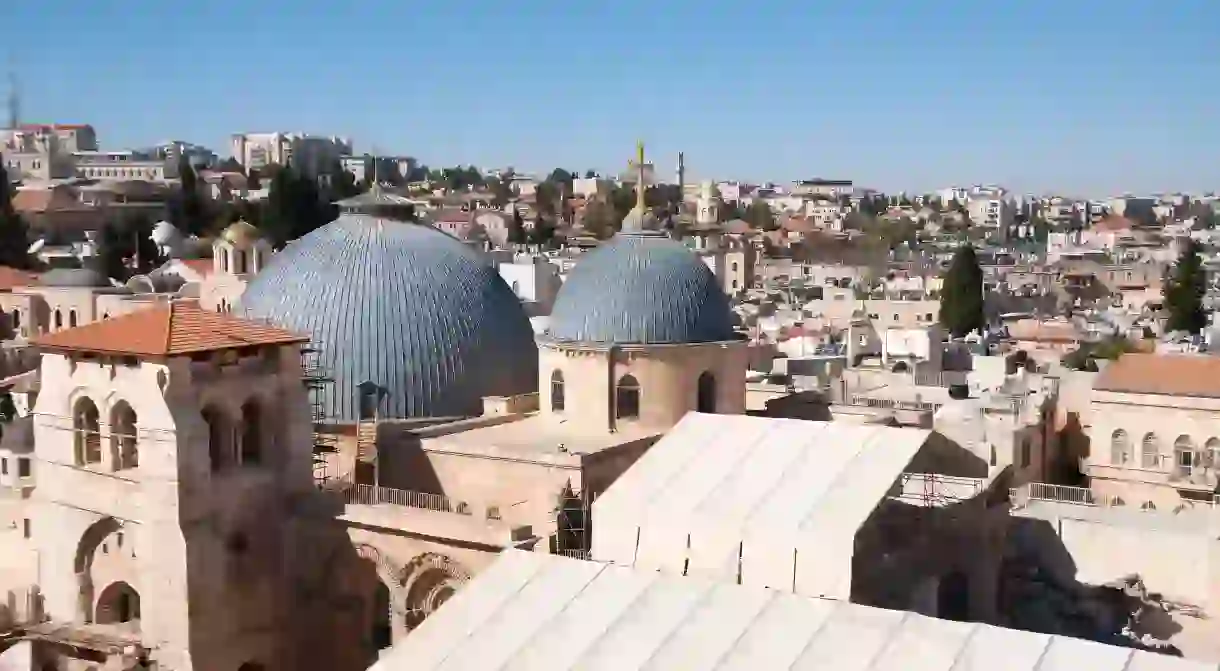The Best Attractions in Jerusalem

As the cradle of Judaism, Christianity and Islam, Jerusalem is one of the top historical destinations in the world, and its must-see attractions bear testament to the holy city’s rich and multicultural history.
Jerusalem is one of Israel’s four holy cities (along with Hebron, Safed and Tiberias) and has served as the Jewish people’s spiritual capital since ancient times. The Holy City has witnessed critical events in the Christian world and has become home to a number of key Muslim holy sites. It was invaded and conquered by the Babylonians, the Persians, the Greeks, the Romans, the Ottomans and the British empire, making it one of the few places in the world to have been controlled at various times by the world’s most influential civilisations.
The Western Wall
Shrine, Historical Landmark

Visiting the massive stone edifice provides an opportunity to witness Jews from a variety of cultures deep in prayer, from Yemenite Jews in tunics and traditional head wraps called matzars, to Hasidic Jews in fur hats and long overcoats popularised in the 18th century in Poland. As with all Jerusalem holy sites, regardless of faith, modest dress is required for men and women. If you’re planning on visiting the Western Wall, check our article on Things You Need to Know Before Praying at Jerusalem’s Western Wall.
Via Dolorosa
Shrine, Historical Landmark

Some of Christianity’s holiest sites can be found in Jerusalem, including the Via Dolorosa. Translated as the ‘Way of Sorrow’, this route in the Old City includes critical points on Jesus’s procession toward crucifixion, including the Antonia Fortress and the Church of the Holy Sepulchre, where Jesus is believed to have been crucified and resurrected. Visit on Friday and you can witness a traditional Roman Catholic procession travelling the Via Dolorosa, or arrive for one of the elaborate re-enactments that are regularly staged along the route’s stone pathways and dramatise historical events from Jesus’s life.
Spending time in this area also provides a window into Christian traditions, such as those practised by the Coptic Orthodox church, the Armenian Apostolic church and by a variety of Evangelical sects from African and Asian nations.
Dome of the Rock
Mosque, Shrine

Accessing the ornate Dome of the Rock complex can be challenging due to a limitation on visiting hours and restrictions on non-Muslims who are not permitted to enter the interior of the Dome of the Rock or the Al-Aqsa Mosque, and who are forbidden from praying anywhere on the Temple Mount.
Abu Ghosh
Restaurant, Cafe, Food Stall, Israeli, Middle Eastern, Vegetarian
If you love hummus, you don’t want to miss the chance to taste one of the best in the world. Abu Ghosh, an Arab-Israeli town, just outside Jerusalem, attracts Israelis and tourists who are drawn by its food and restaurants, which range from food carts to traditional Middle Eastern establishments with breathtaking views of the Jerusalem Hills. The best place to find hummus is the Abu-Ghosh Restaurant on Kvish ha-Shalom, which serves authentic Middle Eastern cuisine and provides an opportunity to enjoy Arab-Israeli culture in a relaxed surrounding.
The Rekevet Trail
Park, Skate Park
The Rekevet Trail is a disused railroad track that the Jerusalem municipality has transformed into a six-kilometre-long paved path with two lanes: one for pedestrians and the other for cyclists. Starting close to the Old City at the First Station restaurant and shopping complex, this trail is beautifully landscaped. The city has gone to great lengths to surround the trail with flowers and vegetation.
Popular with local residents who use the path for their daily jog or walk to work, the Rekevet passes through Jewish and Arab neighbourhoods before arriving in the Refaim Valley, with the Ein Yael Nature Reserve on one side and the Biblical Zoo (Tisch Zoological Gardens) on the other.
Israel Museum, Jerusalem
Building, Museum, Shrine

The museum has a special wing for children that offers dynamic youth programmes focused on fostering intercultural understanding between Arab and Jewish students. There are lots of great museums to explore in Jerusalem – check out our list of The Best Museums To Visit In Jerusalem.
Mount of Olives
Archaeological site

The Mount of Olives welcomes hundreds of visitors every day, including Christian pilgrims, who are drawn to the many churches in the area, and Jewish mourners, who attend funerals and pay homage at famous grave sites every day. The Muslim-majority neighbourhood of At-Tur in the middle of the Mount of Olives houses the Mosque of the Ascension (Chapel of the Ascension), which marks the spot where Jesus is believed to have ascended to heaven.
Museum For Islamic Art
Museum

The Hurva Synagogue
Synagogue

In Hebrew, hurva means ruin or destruction, a phenomenon to which this house of worship is no stranger. The Hurva Synagogue, which was razed to the ground in 1721, just a few years after its construction, and blown up by the Arab Legion during Israel’s War of Independence in 1948, was rebuilt around the turn of the millennium and reopened in 2010. In its most recent incarnation, the Hurva is a four-storey synagogue built in the Byzantine Revival style.
Tours of the structure’s ornate interior provide a thorough history of the Old City, from biblical times to the present, and culminate in a trip to the synagogue’s roof, which boasts some of the best views in the city of the Temple Mount.













